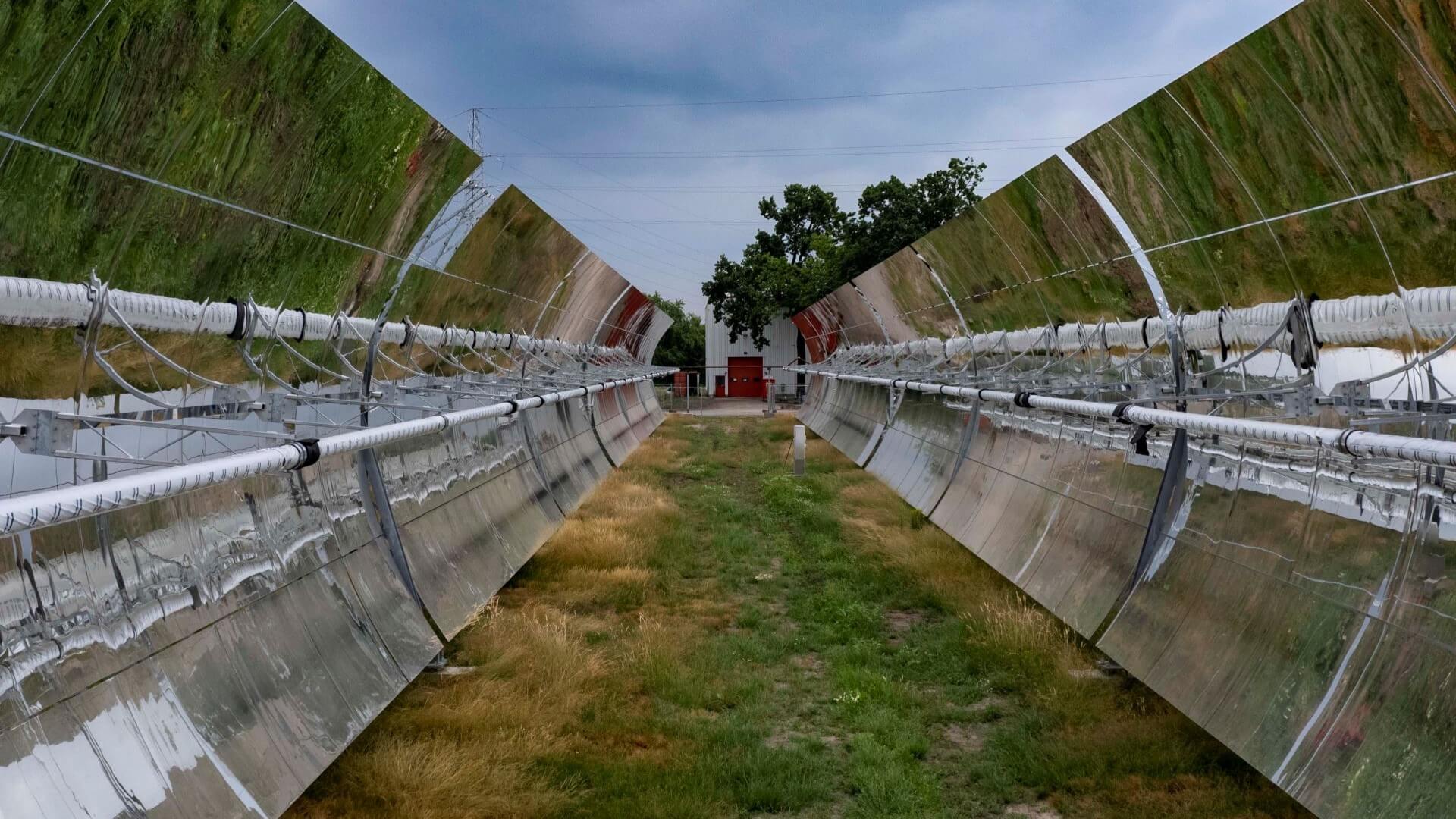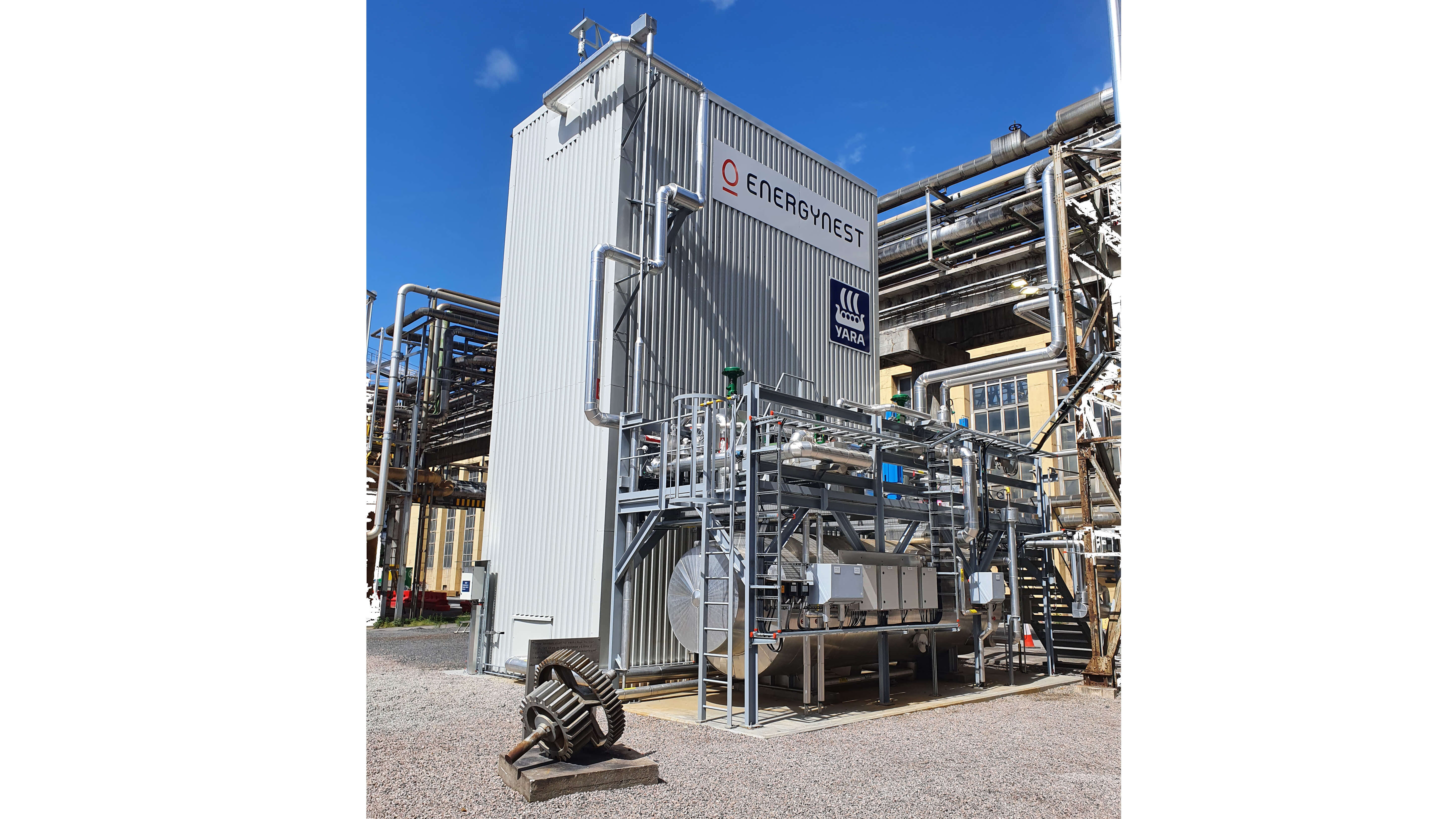UPDATED 1 Sept: The EI library in London is temporarily closed to the public, as a precautionary measure in light of the ongoing COVID-19 situation. The Knowledge Service will still be answering email queries via email , or via live chats during working hours (09:15-17:00 GMT). Our e-library is always open for members here: eLibrary , for full-text access to over 200 e-books and millions of articles. Thank you for your patience.
New Energy World™
New Energy World™ embraces the whole energy industry as it connects and converges to address the decarbonisation challenge. It covers progress being made across the industry, from the dynamics under way to reduce emissions in oil and gas, through improvements to the efficiency of energy conversion and use, to cutting-edge initiatives in renewable and low-carbon technologies.
Thermal storage technology – one solution to heavy industry’s emissions problem
15/11/2023
6 min read
Feature
Thermal energy storage is a means to store renewable energy generated onsite until the time that energy is needed. It can also deliver a range of benefits to industrial energy users, from security, reduced costs and lower CO2 emissions. Here, Dr Christian Thiel, CEO of ENERGYNEST, explains how.
As the regulatory landscape on carbon emissions heats up, it is no secret that industries are facing growing pressure to increase energy efficiency and reduce carbon emissions. In today’s world, companies must show how they are decarbonising in order to attract investment, meet the demands of regulators and secure commercial partnerships and contracts.
However, the reality is that many facilities are running out of viable solutions to decrease their energy demand and reduce their dependency on fossil fuel-based heat or power generation. And, while solutions such as hydrogen need large amounts of capital expenditure to get projects off the ground and require further investment in supporting infrastructure, thermal energy storage technology is here and working right now.
One of the main hurdles that large energy users face in decarbonising is intermittency. In other words, when the wind isn’t blowing or the sun isn’t shining, how can you continue to run your operations on green power and heat without increasing your reliance on fossil fuels?
This problem is compounded in heavy industries such as steel manufacturing or fertiliser production, where the need for high heat levels make decarbonising much more complex than installing renewable electricity generation. Heavy industry is responsible for nearly 40% of global CO2 emissions according to Brookings, and the International Energy Agency finds heat makes up two-thirds of industrial energy demand. Put simply, ignoring the need to rapidly decarbonise industrial heat will materially delay achieving net zero goals.
Many energy producers or industrial consumers produce very large quantities of excess heat, steam or electricity that’s going to waste. At its most simple, thermal energy storage turns this off-peak electricity, waste heat or excess steam into green energy, enabling operators to manage their energy on demand and maximise its economic value.
Process heat from fossil energy sources can also be electrified with the help of thermal storage. The technology provides CO2-free heat and steam on demand and enables, for example, the re-deployment of day-time solar energy in night-time production processes. Storage systems can be cost-effective, flexible, reliable and scalable for a wide range of industrial applications.
It's evident that thermal storage has a key role to play in the move away from natural gas in heavy industrial processes. It is one of the few technologies that simultaneously contributes to all three goals of the energy transition: increasing supply security, ensuring lower energy costs and effectively reducing CO2 emissions.
Most importantly, thermal energy storage is not a pipedream; it is here and working now. ENERGYNEST is testament to thermal storage being a proven and effective technology. We have a market-ready thermal battery, with several projects currently under construction and in commercial use – for example, at the Norwegian fertiliser manufacturer Yara, with Italian energy group Eni, and in Belgium at global materials manufacturer Avery Dennison.
Thermal storage simultaneously contributes to all three goals of the energy transition – increasing supply security, ensuring lower energy costs, and effectively reducing CO2 emissions.
Modularity is key
ENERGYNEST’s thermal battery is a solid-state, high temperature thermal energy storage system. Crucially, it is modular and scalable, meaning that the battery can plug into any stand-alone system using thermal oil or steam as heat-transfer fluid to charge and discharge green energy on demand.
This is a significant advantage of the technology, as it means the thermal storage battery can be installed in a wide range of industries and applications. There are use cases for thermal batteries in a plethora of industrial processes, from packaging manufacturing and oil refining, and even beer brewing.
The thermal storage process
So, how does the modular technology work? Our thermal battery stores and discharges heat at industrial scale using heat transfer fluid and ‘heatcrete’, our core storage material. The thermal battery is ‘charged’ as hot heat transfer fluid flows through embedded steel pipes from top to bottom, transferring thermal energy to the battery’s core storage material. There, energy is stored with minimal heat loss until it is needed.
During discharge this flow is reversed: cold heat transfer fluid flows in at the bottom and exits hot, supplying energy from the top of the thermal battery. When using water as a heat transfer fluid, the thermal battery is able to act as a steam cooler and condenser in charge mode, and as a boiler and superheater in discharge mode, using the same principles of steam generators installed in conventional and solar thermal power plants.
Case study 1: Avery Dennison – Balancing concentrated solar thermal production 
Some of the parabolic mirror solar collectors at the Avery Dennison CST facility in Belgium
Photo: ENERGYNEST
ENERGYNEST’s thermal battery has been installed at the production unit of Avery Dennison Performance Tapes in Turnhout, Belgium, as part of a project to shift its heat production from natural gas to concentrated solar thermal (CST) energy. The renewable energy platform marks the largest installation of parabolic mirrors in an industrial setting in Europe.
The CST technology employs a series of parabolic mirrors to reflect and concentrate sunlight upon a collector tube filled with liquid, heating it to temperatures of up to 400°C. The liquid, such as thermal oil, was selected for its high thermal conductivity and ability to absorb heat with maximum efficiency.
With ENERGYNEST’s thermal battery running on thermal oil, (excess) thermal energy will be captured in the storage system and dispatched on demand and at night, keeping production running and enabling the plant to meet its emissions reduction target of 70% by 2030, and net zero by 2050.
The CST installation at Turnhout will supply carbon-free renewable solar energy to partially run the drying ovens used in the coating process of adhesive products manufactured at the site. These products are used across a wide variety of industries, including the automotive, building and construction, and medical device sectors.
EU and local community buy-in
The project is hugely significant for the local community in Turnhout, as well as Belgium and Europe as a whole. The development is Europe’s largest CST platform and thermal storage unit, and the project received funding from the European Union’s Horizon 2020 research and innovation programme. Additionally, the Turnhout community provided considerable support for the CST project, with financing secured through Campina Energie, which is engaged in green energy projects and represents more than 1,000 Turnhout residents.
Cutting gas usage
As a result of the installation, the facility will be able to cut annual gas usage by approximately 9%. Excitingly, the energy generated from the CST, and stored and discharged by ENERGYNEST’s battery, is expected to replace 100% of gas usage during the hottest months.
Case study 2: Yara – Greening fertiliser production 
Thermal battery installation at YARA International in Norway
Photo: ENERGYNEST
The global production of fertilisers is responsible for around 1.4% of annual CO2 emissions, and fertiliser use is also a major contributor of non-CO2 greenhouse gas emissions. As the global population continues to grow and agricultural activity ramps up with it, decarbonising the production of fertilisers is more important than ever.
The production process for ammonia fertilisers is carried out at high temperature and pressure, typically supplied by fossil fuel gas. As such, the overall emissions associated with the industry are substantial – almost equivalent to the emissions of Germany.
In fertiliser production – and across other heavy industries – heating and cooling must continue round the clock, adding major cost and resource burdens. But all too often, batch processes or interruptions lead to imbalances between supply and demand, requiring back-up boilers to start or steam to be dumped.
Implementing a steam-to-steam storage system solves this problem by storing, time-shifting and balancing high or medium-pressure steam to make it available on demand, achieving the balance needed for greener industrial processes.
Steam grid balancing
In 2020, ENERGYNEST partnered with the largest nitrogen-based fertiliser producer in the world, Yara International, to decarbonise its operations and reduce energy wastage at their Porsgrunn production facility in Norway.
The company integrated a 4 MWh thermal battery, directly connecting the battery to the steam grid at the facility. This renewable storage system provides increased flexibility to the plant by balancing local steam production and reducing the amount of wasted steam.
As a direct result of the installation, the facility has effectively operated through nearly 4,000 storage cycles, achieving impressive energy savings of circa 12 GWh/y while reducing CO2 emissions by approximately 6,000 t/y.
Capturing energy wastage
A key benefit of the thermal storage battery in this context is that it captures the energy that would otherwise be going to waste. In industrial processes which require high quantities of heat, finding a way to capture and re-use the excess is critical to greening operations. Ultimately, letting surplus energy go to waste is throwing away value, as well as increasing emissions.
